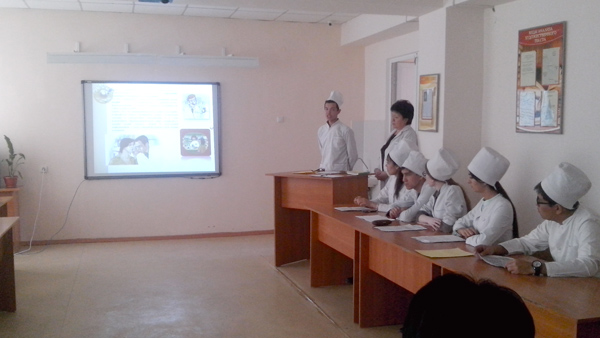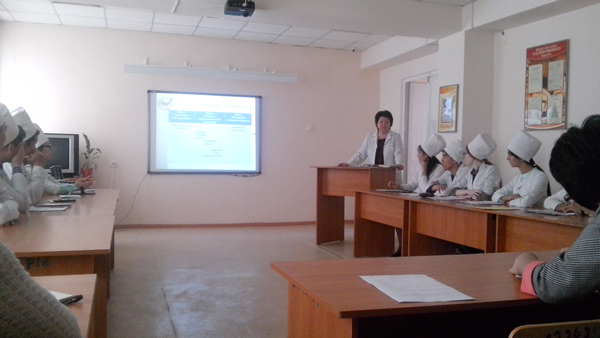“It is necessary to teach not a thought, but to think”

Today, there is no teacher who would not have thought about the question: “How to make a lesson interesting, bright? How to encourage students to learn? How to create a successful situation at the lesson for every student?”, every teacher wishes the students to master the subject at their maximum level. Speech culture gives self-confidence, helps to orient in any life situation. In this connection, on March 4, 2016 Saule Khamzeyevna Amandykova, the Head of the Department of “Kazakh, Russian and Latin languages”, Candidate of Philological Sciences presented her demonstrative lesson. The theme was “Professional student speech” and the objectives of the lesson on the development of common cultural and professional competences were clearly defined and marked during the lesson. Presentations of students on the themes “My profession is pharmacist”, “Pharmacist symbols”, “List of super-long terms” has brought us into a kind of creative workshop. When filling SWOT- analysis – “Tree of wisdom “Who am I?”- using IQ- technology, it was determined life and professional priorities of students. Students freely oriented in the general flow of information. In the process of teamwork of captain game “Alphabet”, it was shown intelligence and sagacity of students. The information block of the lesson was successfully combined with such types of work as explanatory - illustrative method, communication rules of a pharmacist with a buyer, “Take up an attitude “For” and “Against” in definite situations, a medical quiz and a quiz “Interesting facts in pharmacology”.

These lessons will undoubtedly contribute to the development of personal qualities like: communication, critical thinking, creativity, creativity attitude, self-esteem and self-awareness. The teacher’s skills in conjunction with the use of problem-learning technologies made it possible to conduct a lesson rationally, intensively and productively, because the word was given to us not to put to sleep a thought, but to awake someone else’s one.
 908 views
908 views
